Valerie Tarico’s article is published in Alternet:
2015-02-26
Alternet

Musings on biblical studies, politics, religion, ethics, human nature, tidbits from science
Mostly straightforward but still some questions arise. Where does New Testament end and Church history and question of Christian origins, also certain roles of Marcion, begin? (Marcion’s argued influence on NT should be included here; also evidence of early readings found in Fathers like Tertullian.) Relevant manuscript discoveries and analysis belong here, including histories of their later copying.

Valerie Tarico’s article is published in Alternet:

Correction (27 Feb 2015): I should have given priority to Alernet's publication of Valerie Tarico's article. It was published on Alternet a day before it also appeared on her blog.
***
Valerie Tarico last September ruffled a few feathers with her article on mythicism (see Fear in the Heart of a Bible Scholar) and then followed up with an article in The Humanist outlining the views of James McGrath, Raphael Lataster and yours truly. (See Savior? Shaman? Myth? Ink Blot? — Views of Lataster, McGrath and Godfrey).
Valerie’s most recent post is
Nine “Facts” You Know For Sure About Jesus That Are Probably Wrong
It’s not about mythicism this time but it does link to four Vridar posts to illustrate some of her points.

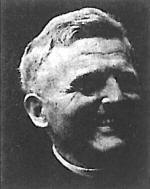
Sometimes I like to lull myself to sleep at night by reading obscure books about Biblical Greek. I recently picked up a real snore-fest by Maximilian Zerwick called Biblical Greek: Illustrated Examples. Early in the book Zerwick talks about a phenomenon in Greek, which also exists in English, in which the third person plural refers to some general, anonymous group, usually best translated as “they say” or “people say.”
In German and French, there’s a singular form (“man sagt” and “on dit“), but in English we have the same sort of thing as in Greek. For example:
They say a little knowledge is a dangerous thing, but it’s not one half so bad as a lot of ignorance. –Terry Pratchett (Equal Rites, emphasis mine)
As Zerwick rightly points out, we usually see the indefinite plural with verbs of telling, hence in Latin: “dicunt, ferunt, tradunt.” It’s possible that indefinite plurals were common in Aramaic, which Zerwick suggests may have influenced Mark. He writes:
This is perhaps why it occurs with especial frequency in Mk, often, in parallel passages, corrected by Mt, and still oftener by Lk. . . . [I]n Mk (3,21) we read a text which seems offensive to the honour of the Mother of God: ἀκούσαντες οἱ παρ’ αὐτοῦ ἐξῆλθον κρατῆσαι αὐτόν, ἔλεγον γὰρ ὅτι ἐξέστη [akousntes hoi par’ autou exēlthon kratēsai auton, elegon gar hoti exestē]. These παρ’ αὐτοῦ [par’ autou] are later (v. 31) said to be “His mother and his brethren.” Were they necessarily the ones who thought Jesus was deranged? (Zerwick, 2011, p. 2)
In most English translations, the meaning seems to be that Mary and Jesus’ brothers thought he had come unhinged.
And when his family heard it, they went out to seize him, for they were saying, “He is out of his mind.” (Mark 3:21, ESV)
“His family heard” . . . “they went out” . . . “they were saying.” Simple, right? Continue reading “Did Jesus’ Mother and Brothers Lose Faith in Jesus?”


Familiarity with the stories of Jesus’ birth can blind us to recognizing just how bizarre are some of their details. Okay, maybe the virgin birth itself is bizarre but I recently read one reasonably well-known scholar opining that even that may not be so bizarre when we stop and recollect the ability of certain animals such as Komodo Dragons to reproduce by parthenogenesis. The scholar stopped short of speculating how it was that Mary came to be born human-like yet presumably with reptilian internal organs or the nature of the children she later bore to Joseph.
The Gospel of Luke opens with the angel Gabriel dropping in on two earthlings without the courtesy of advance notice. The first was the very elderly priest, Zechariah. Gabriel interrupted him during work hours in the Temple causing a religious ceremony to be unceremoniously held up in midstream, told Zechariah that he and his equally elderly wife were going to have a child and then cursed him with the inability to speak for daring to ask how any couple well beyond menopause could possibly bear children.
Six months later the same Gabriel dropped in on Mary. Now Mary, Luke tells us, was a virgin engaged to be married to Joseph. We are not told when they were planning to marry but no doubt Mary spent a lot of time thinking about that day and what married life with Joseph would be like.
 Gabriel told Mary that she was going to have a baby boy and that she was to name him Jesus.
Gabriel told Mary that she was going to have a baby boy and that she was to name him Jesus.
Mary immediately forgot she was engaged to be married and so asked Gabriel how that was possible since she was, well, not married. Mary’s question was as dumb as Zechariah’s was smart.
Mary’s question is very puzzling: why should a woman about to marry wonder at the notion that she will soon conceive? (Randel Helms, Gospel Fictions, p. 51)
So what’s going on here? Why does Luke make Mary look so absurdly naive? Continue reading “Mary’s Strange Question (and stranger anatomy!)”

While we may have had to wait until the end of Mark’s story for the denouement of the secrecy gospel, Luke removes all suspense early on with the scene in the Nazareth synagogue (Luke 4:16-30). In The Messianic Secret, William Wrede writes:
Here Jesus reads out the words of Isaiah 61.1f. regarding the anointing for messianic vocation and then goes on to say, “Today this scripture has been fulfilled in your hearing”. But this is nothing other than a messianic self-proclamation, and if Luke in all probability made up this scene himself in so far as it is at variance with Mark, and certainly thought of it as an introduction determining the character of the presentation of the story which follows, yet one gains the impression that here he is doing something which Mark would hardly have done. However many contradictions may be found in Mark along with the idea of secret messiahship, this is on a different footing. It looks like a denial of the idea itself. (Wrede, 1901/1971, p. 178, emphasis mine)
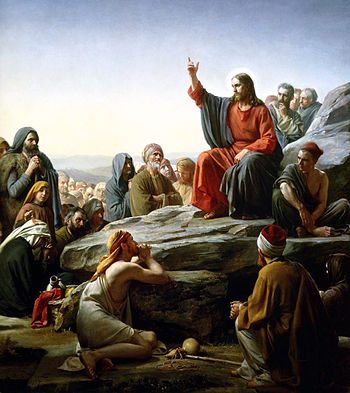
Luke’s Jesus does not hide his light under a bushel. He lets everyone know who he is. We can see the extent to which Luke has embraced this public, openly messianic Jesus even in the way he teaches the crowd.
Wrede makes the point that in Matthew, much of the instruction Jesus imparts to his disciples remains private. The Transfiguration, the prophecy of the passion, the meaning of parables, the “question about the last things,” etc. happen away from the crowds and sometimes away from the majority of the disciples. But that’s not all.
We may also mention that even the Sermon on the Mount is regarded as instruction of the disciples. For according to 5.1, when Jesus sees the crowds, he goes up the mountain and then the disciples approach him[*] in order to receive his teaching. This, of course, is again forgotten at the end of the sermon in 7.28.
[*] prosēlthan autō hoi mathētai, Matthew is very willing to say, even although they were already together with Jesus. Proserchesthai [coming near to, approaching] is generally used by him more often than in all the other New Testament writings put together. (Wrede, 1901/1971, p. 178)
In other words, Jesus is moving away from the crowd and up the mountain where he will give private (secret?) instruction. Apologetic and traditional commentators haven’t seen it that way, of course. Instead of retreating, they imagine that Jesus is simply getting a better vantage point from which to address the crowd. But the text is quite clear. Continue reading “Reading Wrede Again for the First Time (11)”

Romans 1:1-7 (YLT)
1 Paul, a servant of Jesus Christ, a called apostle,
having been separated to the good news of God —
2 which He announced before through His prophets in holy writings —
3 concerning His Son,
(who is come of the seed of David according to the flesh,
4 who is marked out Son of God in power, according to the Spirit of sanctification [=Holy Spirit], by the rising again from the dead,)
Jesus Christ our Lord;
5 through whom we did receive grace and apostleship, for obedience of faith among all the nations,
in behalf of his name;
6 among whom are also ye, the called of Jesus Christ;
7 to all who are in Rome, beloved of God, called saints; Grace to you, and peace, from God our Father, and [from] the Lord Jesus Christ!
Interpolation is a four letter word for some scholars: it can only be justified under extreme provocation such as when all the earliest witnesses leave not a shadow of doubt.
Such a standard flies in the face of what we know about the transmission of ancient manuscripts, especially the canonical ones. See Forgery in the ancient world and List of scholars believing Paul’s letters were interpolated. Nonetheless I can understand why some authors play it safe by being very reluctant to treat any passage in Paul’s letters as an interpolation unless supported by widely acknowledged arguments. I’m not so conservative. If only one scholar produces very sound arguments that his or her peers fail to address then I’m willing to take the possibility of interpolation seriously.
So much for the preamble.
Sparks have flown between Christ Myth advocates and their opponents over the opening passage in Paul’s epistle to the Romans that declares Jesus Christ to be “of the seed of David according to the flesh” but these verses may have another significance for our understanding of how early Christian ideas evolved. So forget the mythicist debate for a moment.
Many of us are aware of Hermann Detering’s arguments for Romans 1:2-6 being an interpolation laden with anti-Marcionite innuendo. I won’t repeat those here. Consider this a related post.
I have also posted the 1942 argument of A. D. Howell-Smith for Romans 1:3 (who is come of the seed of David) being an interpolation. Again, consider this post related.
Alfred Loisy (1935) makes a passing reference to Romans 1:3-4 (see the bolded passage in the side box) being a likely interpolation in Remarques sur la littérature épistolaire du Nouveau Testament, p. 9. These lines are anomalous padding within a standard introduction.
J. C. O’Neill in Paul’s Letter to the Romans (1975) published a detailed argument for why we should consider all of verses 1b to 5a as an interpolation. (See the indented lines in the side-box. He also found the words I have italicized intrusive.) It is O’Neill’s discussion pages 25 to 28 that I set out below.
Normal introductions were as simple as possible. Example:
Demophon to Ptolemaeus, greeting.
Affectionate and official letters could be elaborated a little:
Apion to Epimarchus his father and Lord, heartiest greetings.
Polycrates to his father, greeting.
Claudius Lysias to his Excellency the governor Felix, greeting. (Acts 23:26)
James, a servant of God and of the Lord Jesus Christ, to the twelve tribes in the Dispersion, greeting. (James 1:1)

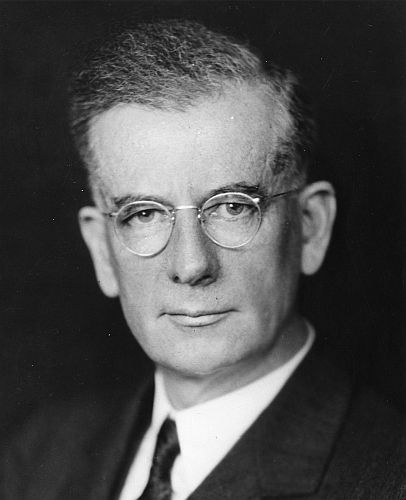
Way back in the previous century, I attended Ohio University at Athens. A young, naive freshman, I headed off one gloomy autumn day to the campus library, searching for source material for an astronomy paper. The stacks were vast; I was looking at more books than I had ever seen in one place.
By New World standards, OU is an old school, founded in 1804, the year after Ohio entered the Union. They’ve been gathering books and periodicals for quite some time.
According to Wikipedia, the Vernon R. Alden Library has switched completely from the Dewey Decimal System to the Library of Congress System. However, back in 1977 they were still in transition. All the old books were in Dewey, but the staff were categorizing new acquisitions using LOC codes. I gravitated to the old stacks, perhaps because I was more comfortable with the older numbering system. Or maybe I just like the smell of old books.
At any rate, that day I came upon Fred Hoyle’s Astronomy from 1962. Hoyle, of course, believed in the Steady State theory of the universe. This was my first introduction to it, and I found it fascinating. So I wrote a short paper on the subject, based on Hoyle’s treatment. What my naive freshman self didn’t know was that just a couple of years after Hoyle published Astronomy, Arno Penzias and Robert Wilson found the echo of the Big Bang — background radiation evenly spread throughout the sky, compelling evidence for the origins of our universe.
[I find it mildly ironic that while writing this post, news has arrived that calls into question the Big Bang. Try wrapping your head around this: “Brian Koberlein from the Rochester Institute of Technology pointed out that while it may appear that the study suggests that the Big Bang did not happen, the event still occurred.“]
While reading Shirley Jackson Case’s The Historicity of Jesus, I was reminded of that incident from my youth. As I recall, the teacher’s aide who graded my paper was more forgiving than I deserved. But I learned my lesson. It’s all right to have some familiarity with older research, but the careful student will always keep up with the most recent work in the field.
On the bright side, because Case’s book is over a century old Google (before it lost interest in such altruistic efforts) has lovingly scanned it and put on line. You can even download a PDF copy or read it at archive.org. On the other hand, because he wrote it nearly 103 years ago, some of the arguments are a little stale. Continue reading ““It is absurd to suggest . . .” — Shirley Jackson Case on The Historicity of Jesus“

Daniel N. Gullotta is not a mythicist. He believes in the historicity of Jesus. So his blog post on Richard Carrier’s argument for the Christ myth theory, Why You Should Read Carrier’s On the Historicity of Jesus, is especially interesting.
Gullotta begins:
Throughout the centuries, the Jesus/Christ Myth has found few, but notable, adherents such as Constantin François de Chassebœuf, Bruno Bauer, and Arthur Drews, noted as the forefathers of the Mythical point of view on the historicity of Jesus. More recently, G.A. Wells[*], Earl Doherty, Robert M. Price, and Richard C. Carrier have become the most prominent figures within the school of thought. Now with Carrier’s publication of On the Historicity of Jesus: Why We Might Have Reason for Doubt and Proving History: Bayes’s Theorem and the Quest for the Historical Jesus, he now stands as the most dominant voice in favor of this thesis.
Daniel Gullotta agrees with Stevan Davies, another “historicist” that mythicism ought to be addressed seriously:
[L]ike Stevan L. Davies, I believe that “the Mythicists have discovered problems in the supposed common-sense of historical Jesus theories that deserve to be taken seriously.” Many scholars have simply opted to completely ignore the Jesus Myth theory (and with some understandable reasons), however I do not think that is the right approach, especially for people who do wish to assert the historicity of Jesus.
What is special about Carrier’s contribution? Continue reading ““Why You Should Take Richard Carrier Seriously””

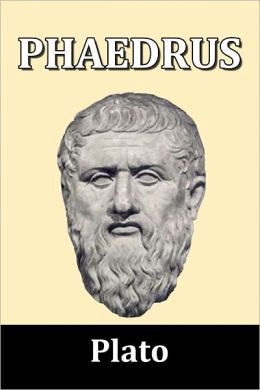 Another Aussie blogger, Matthew R. Malcolm of Cryptotheology, today posted published an interesting post, Plato and Jesus on inviting the poor. Matthew raises a question that emerges quite often to anyone who knows the Bible and reads widely among the ancient texts, Greek, Roman and Jewish. One regularly stumbles across passages that sound just like something in the Bible. I have posted on some of these “ah ha” moments and have many, many more lined up eventually to post about “one day”. Surely there must be reference books identifying these passages. Does anyone know of one?
Another Aussie blogger, Matthew R. Malcolm of Cryptotheology, today posted published an interesting post, Plato and Jesus on inviting the poor. Matthew raises a question that emerges quite often to anyone who knows the Bible and reads widely among the ancient texts, Greek, Roman and Jewish. One regularly stumbles across passages that sound just like something in the Bible. I have posted on some of these “ah ha” moments and have many, many more lined up eventually to post about “one day”. Surely there must be reference books identifying these passages. Does anyone know of one?
I take the liberty of quoting the same edition of the Plato passage cited by Matthew:
If it were true that we ought to give the biggest favour to those who need it most, then we should all be helping out the very poorest people, not the best ones, because people we’ve saved from the worst troubles will give us the most thanks. For instance, the right people to invite to a dinner party would be beggars and people who need to sate their hunger, because they’re the ones who’ll be fond of us, follow us, knock on our doors, take the most pleasure with the deepest gratitude, and pray for our success. (Phaedrus 233d-e, Cooper’s edition)
Recall Luke 14 (NIV). The same ideal ethic (pie in the sky ethic in Plato) is taught as a necessity by Jesus: Continue reading “So Jesus read Plato?”

 In Luke 7 we read about Jesus being urged by his fellow Jews to have special sympathy for a Roman centurion whose beloved servant was at the point of death “because he (the centurion) loved” the Jewish people and had built them a synagogue.
In Luke 7 we read about Jesus being urged by his fellow Jews to have special sympathy for a Roman centurion whose beloved servant was at the point of death “because he (the centurion) loved” the Jewish people and had built them a synagogue.
The centurion heard of Jesus and sent some elders of the Jews to him, asking him to come and heal his servant. When they came to Jesus, they pleaded earnestly with him, “This man deserves to have you do this, because he loves our nation and has built our synagogue.” So Jesus went with them. (Luke 7:3-6, NIV)
A story so similar it is generally believed to be of the same event is found in Matthew 8. (Now if you do not believe the author of the Gospel of Luke knew the Gospel of Matthew then mentally re-adjust what follows to apply to the way Luke changed a tradition known to Matthew or to the way a tradition known Matthew’s spawned a mutation that eventually found its way to Luke.)
Matthew’s tale reveals a very different centurion. Not a word about his affinity with Jews. Rather, in Matthew’s account it is the centurion’s distance from Jews that establishes the whole point of the story. Continue reading “Why Luke Changed a Jesus Miracle Story”

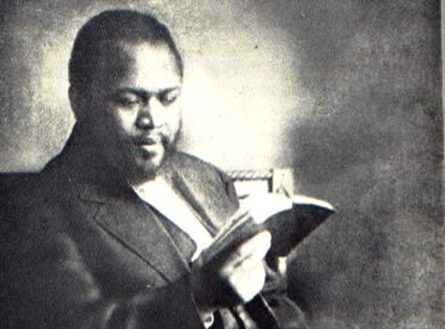
I have just completed reading one scholar’s work that does argue that Paul spread Christianity throughout the Greek world by means of such a movement and have begun another that argues the same with respect to Jesus.
James C. Hanges, author of Christ, the Image of the Church and Paul, Founder of Churches, stresses the importance of cultural theory and the evidence for cultural movements in the Greek and Roman world as vital background to understanding Paul’s letters and career.
One popular stereotype in the era that saw the emergence of Christianity was the “spirit possessed” traveller who would disrupt communities with his bizarre “signs” of the spirit within him, including the babbling of “tongues”, attracting women predominantly to become his followers, and thought to be introducing new gods or unconventional religious observances.
Anyone familiar with that famous fifth century Greek play Bacchae by Euripides will recognize the above character. I had always thought this play was about the conflict that resulted from the introduction of the Bacchic mysteries (or worship of Dionysus) to Thebes. Hanges, however, references scholarship that suggests this surface narrative was originally understood to be representative of the controversies that accompanied the arrival of any (and many) new religious movements to challenge the status quo. Continue reading “Was Christianity Born from a “Pentecostal” Movement?”

 In my previous post I made the following note:
In my previous post I made the following note:
Daniel Gullotta has a more conventional background and approach and recently reviewed Robert Price’s latest volume, Review: The Historical Bejeezus: What a Long, Strange Quest It’s Been. He gives 2 out of 5 stars.
Daniel Gullotta expresses his disappointment over Price giving as much space as he does to some of the more bizarre (and generally obscured from the wider public’s consciousness) Christ myth theories extant today:
Some of these people [reviewed by Price] are household names to Bible geeks, such as John Dominic Crossan, Luke Timothy Johnson, and James D. Tabor, but others are for more obscure and less known. This is where the main problem lies with The Historical Bejeezus.
Some of the writers and theories that Price tackles are simply so minor, so fringe, and so insignificant it is hard to imagine why Price wasted his time and energy writing on them. Some of the chapters that were extremely difficult to finish were the ones related to the works of Hugh J. Schonfield, Joseph Atwill, and Charlotte Allen. . . .
[D]espite the outlandish claims of Atwill’s conspiracy theory about the origins of Christianity and Price’s own criticisms of Atwill’s work, Price nonetheless calls Atwill “an innovative thinker” and says that Atwill’s theory “does not sound unreasonable on the face of it.”
By contrast, writes Gullotta,
Even Richard Carrier is willing to distant himself from figures like Atwill and Murdoch with far more hard hitting reviews and criticisms, despite their shared overall thesis.
I think I can understand where both Gullotta and Carrier are coming from but I also think it is worth taking note of Price’s own explanation for why he “wasted his time” with such “fringe” authors. From Price’s Introduction:
I take quite seriously even works considered eccentric by the (often dull) mainstream of conventional scholarship. It is only by taking such books seriously, rather than offering facile mockery and disdain, that one can tell the difference between nonsense and brilliant new theories. But I have no wish to defend nonsense, and my book’s title pretty well indicates that I find a good bit of it in several of the books I review. And, again, it is my job to show why they are nonsense if indeed they are. . . . (My bolding) Continue reading “Robert Price’s New Book: A Comment”

Time to catch up here with blog posts that have appeared in recent weeks addressing mythicism.
There’s now a blog devoted to mythicism: The Mythicism Files. A good many of its articles look like good future reference material. I was worried at first by the the apparently large space that appeared to be devoted to Acharya S (D. Murdock) but relieved to see Quixie’s very fair discussion of her contribution and criticisms it faces. The Otagosh blog addresses questions a number of us will have about the anonymity of the blog’s provenance. If Quixie is a regular contributor, however, that’s certainly a positive attribute. I’ve seen him write good stuff around various discussion groups and blogs (and in comments on Vridar iirc).
Speaking of Otagosh, he also tells us about the current leader of my old cult wading into the mythicist debate. Predictably a pabulum effort from the great apostle or whatever he’s called now.
Peter Kirby has endeavoured to bring some serious balance into the discussion by posting a detailed case, or rather “best case”, for the historicity of Jesus that he thinks can be made. The Best Case for Jesus. This is good to see. So few anti-mythicists [not that Peter himself falls into that “anti” camp — see his comment below] appear willing or able to argue their case with any real awareness of what mythicists actually say. They also seem to fall back on ad hoc responses too often. Comments are welcome in Peter’s blog, of course, but there is also a discussion on the same at the Biblical Criticism & History Forum. Continue reading “What they’re saying about Mythicism”

This Sunday 25th January Richard Carrier is doing a live Q&A on the historicity of Jesus.
You can post your questions in advance. See his Historicity of Jesus: Live Q&A page for details — and other upcoming debates/discussions.
Also at Lanyrd.com Questioning the Historicity of Jesus: Commentary and Q&A by Dr. Richard Carrier